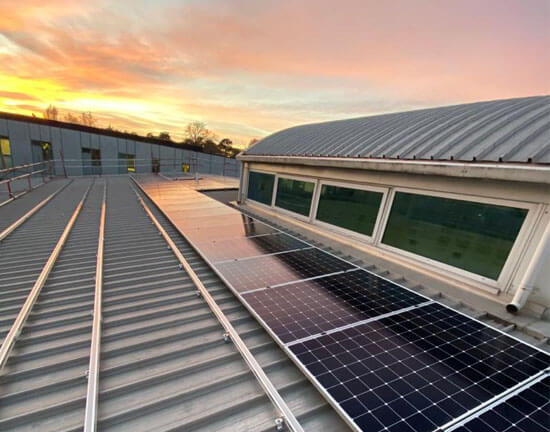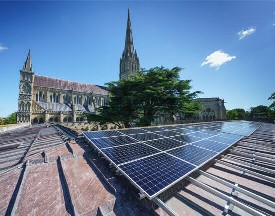A Hub of High Efficiency at Oxford Brookes University
Oxford Brookes is one of the UK’s leading modern universities with an international reputation for teaching innovation and excellence. They are also in the top tier of universities leading the way when it comes to limiting their effect on the environment*. Their 35% reduction in carbon emissions since 2005, already puts the university ahead of its 2025 target of a 34% reduction, but this hasn’t stopped Oxford Brookes wanting to push on and do more – to continue to reduce its environmental impact and create a student campus that truly supports sustainability, as well as inspiring students to significantly reduce wasted energy use and carbon emissions.
Funding and Fusion 21
When Oxford Brookes learned they could secure renawable energy project funding through Salix Finance (interest-free funding for the public sector to improve energy efficiency, reduce carbon emissions and lower energy bills), the university was keen to increase its existing solar PV capacity and looked into procurement routes to find the perfect solar PV partner.
They discovered Joju Solar through the Fusion 21 public sector procurement framework and after surveying the university site, we helped to identify five more suitable buildings for solar PV – designing and procuring the best possible system within Salix funding parameters. The project couldn’t cost more than £222 per tonne of carbon saved (over the lifetime of the project), with a project payback of 8 years.
A greater yield with SunPower
As Oxford Brookes University was committed to generating as much as possible in the available space, to “do more with less” and get the most value from existing building spaces, we used high efficiency SunPower modules on the Buckley Building, John Payne Building, Lloyd Building, Sinclair Building and the International Centre.
Although rare for a commercial solar panel installation project, these state-of-the-art panels gave Oxford Brookes greater output per square metre of roof space, adding just under 300kWp and doubling their solar PV capacity. From a cost perspective, this approach still worked within the Salix Finance funding model, so it was a winner all round!
Despite the installation being initially postponed due to Covid19, the 700 solar panels were installed in November 2020 and it was an absolute pleasure working with Oxford Brookes University to extend their visible commitment to a low carbon future by creating a high efficiency array – generating 224,912kWh per year, with a 57 tonnes CO2 saving.
Discover more
- We love working in the education sector and Solar schools is one of our specialities. We can deliver fully funded installations across your school or university estate, so do find out more about our solar for schools and education
- Discover more about Solar PV and how we can help you.
- SunPower modules are the state of the art – offering efficiencies of more than 23%.





